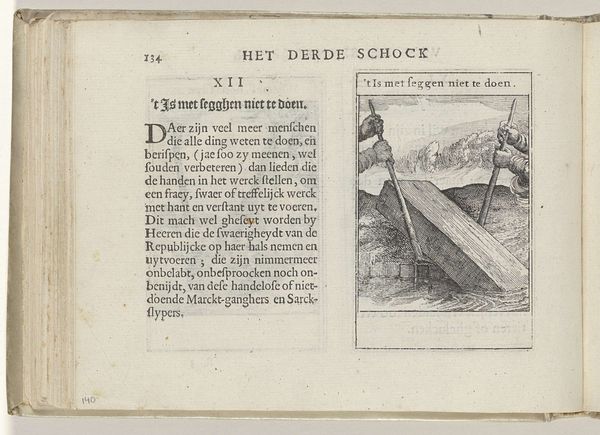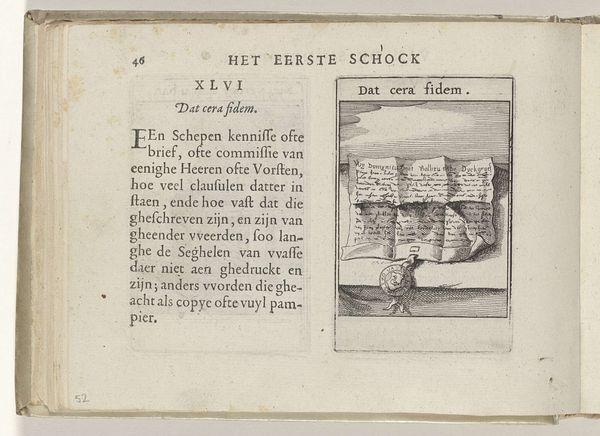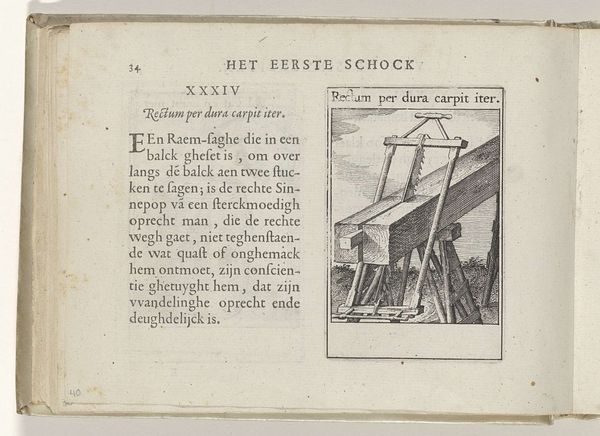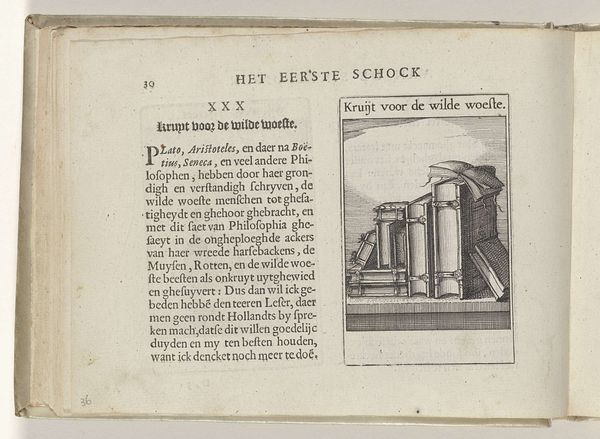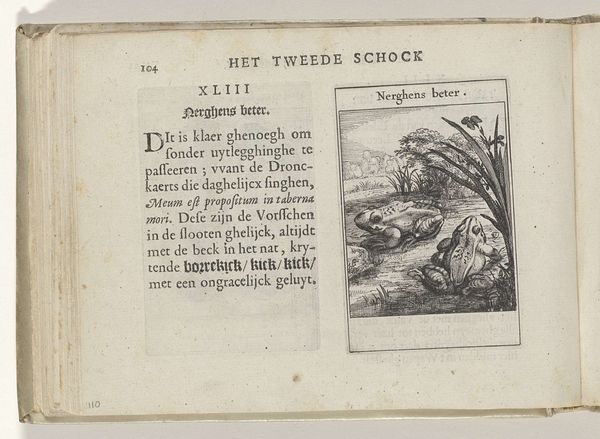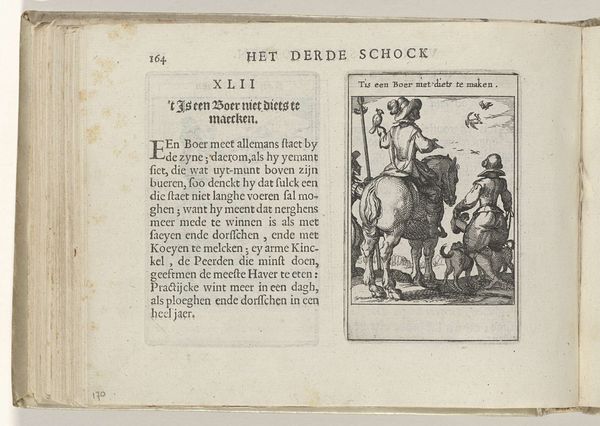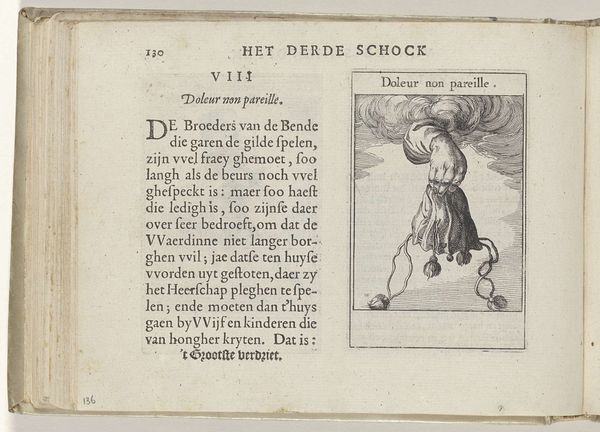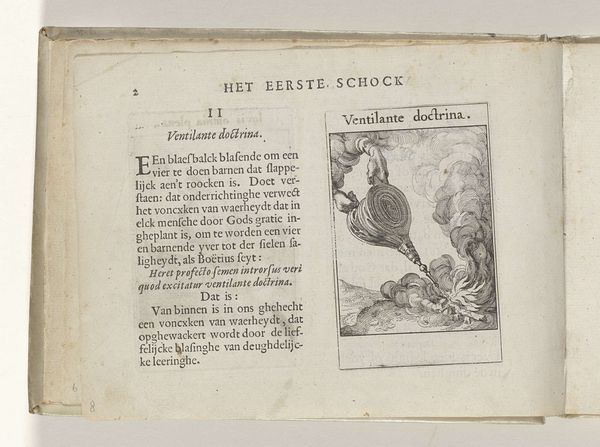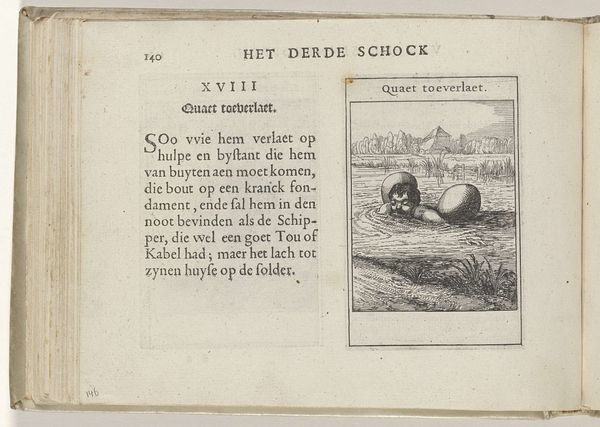
print, paper, engraving
#
narrative-art
#
baroque
#
ink paper printed
# print
#
paper
#
geometric
#
genre-painting
#
engraving
Dimensions: height 137 mm, width 188 mm, height 95 mm, width 60 mm
Copyright: Rijks Museum: Open Domain
This engraving by Roemer Visscher, dating back to the late 16th or early 17th century, captures a specific moment in the history of labor. It shows us an auger, a tool used for boring holes in wood, set against a landscape, a juxtaposition that invites reflection. The auger itself is rendered with careful attention to its material presence; we can almost feel the weight of the metal, and the force required to turn the handle. This wasn’t just about craft skill. The text on the facing page makes clear that constancy and labor conquers all things, and those who diligently labor can earn double wages. There's a clear sense of pride in labor here, linking directly to the social fabric of the time, where skilled labor was valued, not just for its output, but for the virtues it represented. Visscher asks us to consider the relationship between the work, the worker, and the rewards of their efforts. It reminds us that even the simplest tools are embedded in a complex web of social and economic relationships.
Comments
No comments
Be the first to comment and join the conversation on the ultimate creative platform.
